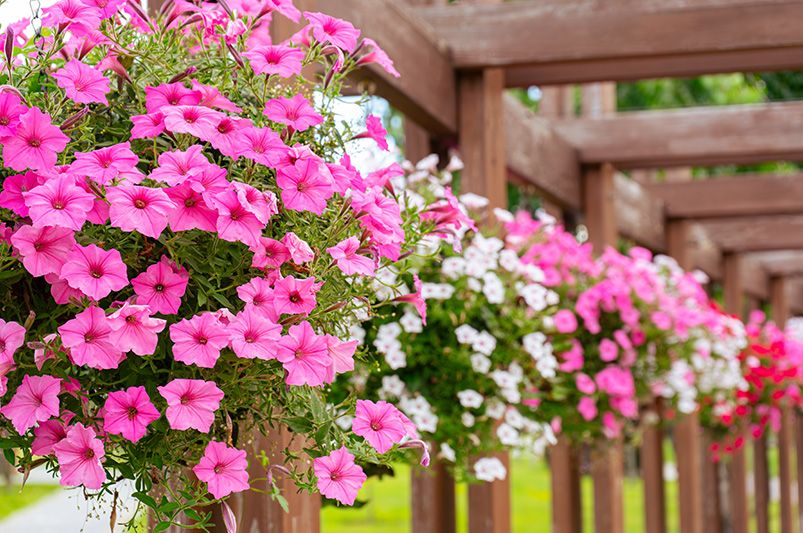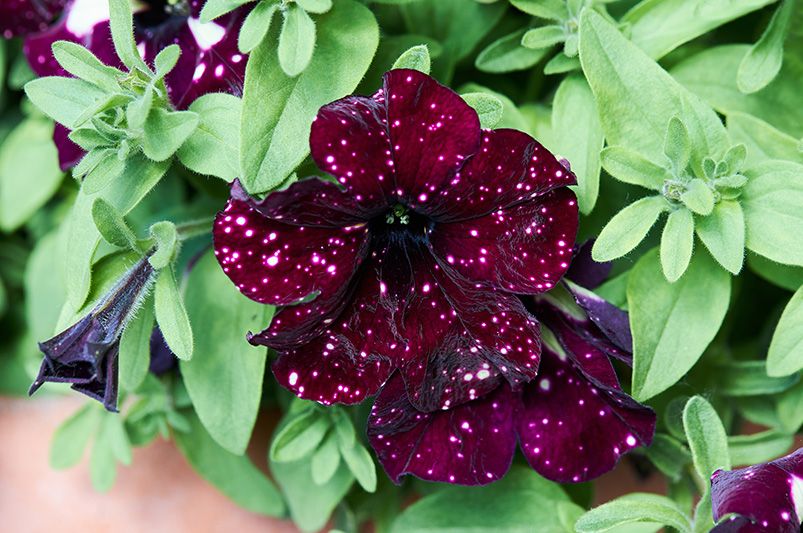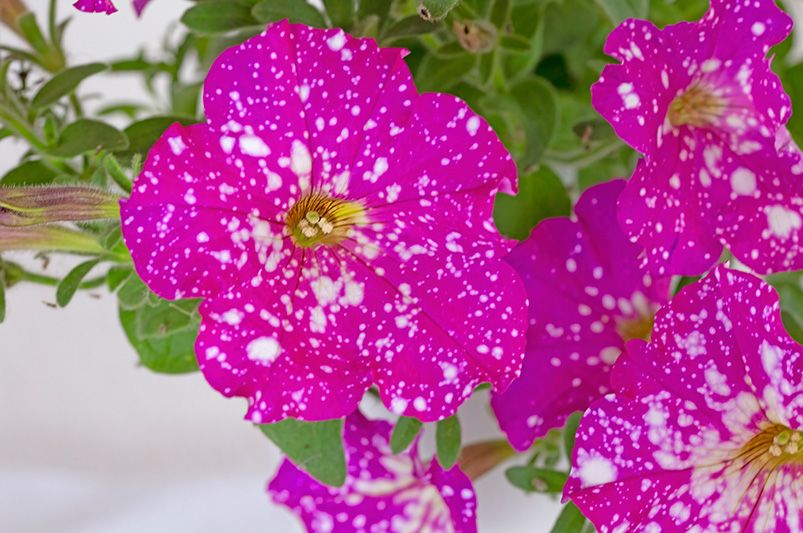
Petunia: The One Flowering Plant You Have to Get
Published: 08/07/2024 | Updated: 08/07/2024
Petunia is a household flower. As a classic garden flower, Petunia offers endless charm and versatility. As it comes in a relatively large variety of colors, it’s also suitable for many garden designs, as well as multiple garden uses, ranging from borders, hanging baskets, and containers to bedding flowers. That’s also due to their variety in sizes. Generally, they’re easy to grow, making them not only beloved by experienced gardeners, but amateur homeowners who don’t want to get overwhelmed.


In this guide, we’ll walk you through our favourite Petunia varieties to grow, but we’ll also offer you all the essential information you need to grow and care for any Petunia flower. For more gardening and landscaping guides to help you along, check our weekly blogs where we cover everything related to landscape care and tips.
The Best Petunia Varieties and How to Care for Them
There are endless Petunia varieties out there. The choice could get overwhelming, but we’ll walk you through the best we believe you should start with. They are exemplary of the Petunia flower, offering the beauty, versatility, and low-maintenance the flower is known for.
They are:

Burgundy Sky Petunia Plant With Burgundy-white Blooms
The Burgunsky Petunia (Petunia xhybrida Burgundy Starry Sky) is prized most for its Burgundy flowers spotted with white. The contrast of the two colors make this specific variety more loved than other varieties that show only one of the colors. In beauty, it’s an equivalent to hanging Van Ghoh’s “Starry Night” in your living room. This plant:
-
Is a hybrid variety of Petunia.
-
Reaches a maximum height of 16 inches.
-
Has a long blooming period, extending over several weeks.
The charm and sophistication of the plant are only matched with its low-maintenance needs. Though it doesn’t require much, making sure to provide the proper care and maintenance will lead to flowering throughout the growing season with full health and vibrancy. The Burgundysky Petunia Plant needs:
-
To be grown in USDA hardiness zones 9-11.
-
To be grown in the full sun, meaning to get at least 6 hours of direct sunlight daily.
-
To be consistently watered but not waterlogged.

Pink Sky Petunia Plant With Pink-white Blooms
The Pink Sky Petunia ( Petunia x hybrida Pink Sky) is another Petunia variety that is renowned for its beauty. With the same white speckles, its blooms are pink instead of burgundy. Aesthetically, the white-speckled-pink flowers offer a different but equally elegant flavor. Likewise, it’ll catch attention whether planted on the border, in flower beds, or on pots placed on the patio. It:
-
Is also a hybrid variety.
-
Reaches a maximum height of 16 inches.
-
Attracts pollinators like butterflies and hummingbirds.
-
Blooms for extended period in the spring and summer.
It doesn’t require complicated care either. Yet, you should take care to attend to its needs properly to get rewarded with a long, healthy blooming season. The aspects you should have in mind regarding that variety is that it:
-
Grows in USDA hardiness zones 9-11.
-
Prefers the full sun to partial shade, so 6-8 hours of direct sunlight daily.
-
Preferably watered deeply every other day.
You can find those lovely varieties in our Shrubhub garden shop here. While shopping, take advantage of our memorial day discount and gift a lovely plant to your friends, neighbors, or family. If you’re not sure what to choose, just go for our gift cards.
How to Plant and Care for Petunias
Now, to take care of those lovely varieties, you should be well versed in what conditions, care, and maintenance Petunia plants usually require. Though Petunias are one of the low-maintenance plants, the better the care and the more ideal the conditions, the better the results you should expect. Here’s all you need to know:
Plantation and Growth
Petunia plants should be planted in well-draining soil leaning on the moist, but never waterlogged as to prevent root rot. The soil should also be slightly acidic. Airflow is important for the healthy growth of Petunias, so make sure you space them well. One foot apart is good enough.
As for sun exposure, Petunias love the full sun. Depending on the temperature and sun intensity in your area, some shade might be tolerable or preferred. But you should give Petunias at least 6 hours of direct sunlight daily.
Plant Care
Petunias don’t require much regular care. They should be watered consistently and deeply, but make sure to not waterlog the soil. As this depends on many other factors like how often it rains in your area, it’s best to not follow a strict schedule and preferably judge by the state of the soil. Water when the top layer of the soil is dry.
When it comes to fertilization, a balanced, slow release fertilizer in the spring is the best way to go. Make sure to not overdo this as well as it could lead to a negative effect like overgrowth of leaves and dwindling of blooms.
Pruning
Throughout the growing season, petunias can become leggy as the main flowering stems mature and lengthen. To encourage fullness, increased blooms, and an extended bloom period, you can prune back or deadhead the branches by about one-third.
To deadhead petunias, look for fading or withered flowers on the plant. Remove these flowers by cutting them back to a point just below the bloom, where you can see fresh growth. Make sure to use sharp pruning shears or scissors to make clean cuts and not wound the plant.
Common Pests and Diseases
Petunias are generally robust plants but may be susceptible to certain pests and diseases. Here are some common ones to be aware of and prepare against.
Pests:
Many pests can bother Petunias. Those are the ones you should be on the lookout for:
Aphids
Aphids are small, sap-sucking insects that can distort or stunt plant growth. They can be controlled through methods such as spraying with insecticidal soap or using natural predators like ladybugs.
Whiteflies
Whiteflies are tiny, flying insects that suck plant juices and can cause yellowing of leaves. You can control them by using sticky traps, insecticidal soap, or neem oil.
Slugs and Snails
Slugs and snails feed on petunia leaves, leaving behind holes and damage. Use organic slug and snail baits or create barriers, such as copper tape, to protect your plants.
Diseases:
Those diseases vary in threat and intensity, but they are the most common when it comes to Petunias.
Powdery Mildew
Powdery mildew appears as a white, powdery coating on the foliage, and can affect petunias during humid conditions. Improve air circulation, avoid overhead watering, and apply fungicides if necessary.
Botrytis Blight
Botrytis blight, or gray mold, causes browning and decay of flowers and leaves. Proper spacing, good air circulation, and removing affected plant parts can help manage this disease.
Root Rot
Overwatering or poorly draining soil can lead to root rot, which can cause stunted growth and wilting. Ensure proper drainage and avoid overwatering to prevent this proble.
This guide walked you through the best Petunia hybrid varieties you should start with, Burgundsky and Pinksky Petunias, then showed you how to provide the optimum care for those lovely plants. Petunias are classic flowers for a reason and have something to offer for every landscape, no matter how you intend to use them.
Taking care of your landscape and developing it is a life-long process. A joyful one. That is, if you're always developing and building on a strong foundation that you're happy with. However, if you have a problem with the fundamental design, then trying to change the plants or other small aspects would be like treating the symptoms rather than the problem.
If this is your case, then have no worries. At Shrubhub, we're currently offering a 70% discount on all our design services, including our 3D landscape design. You only need to sign up here and a professional designer from our team will contact you as soon as possible.


